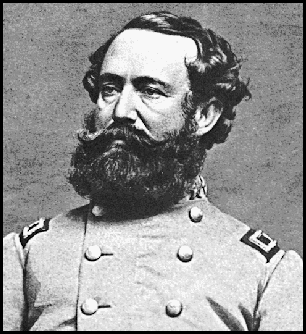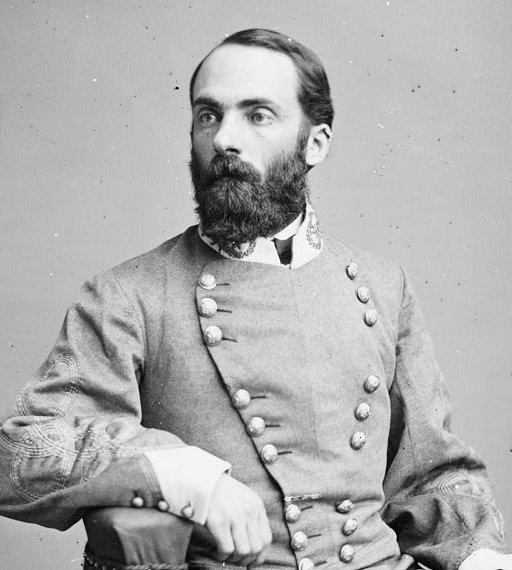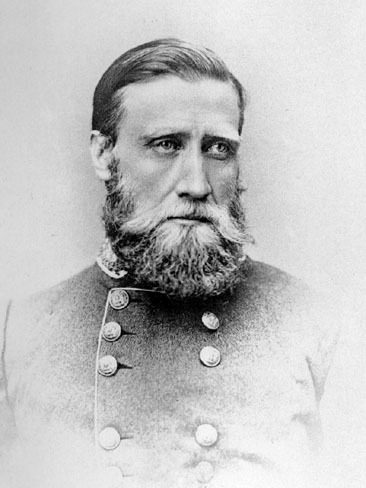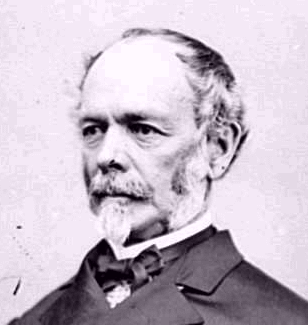The Defense of South Carolina - 1865
|
Other Names: Sherman's March through SC Location: Savannah River to Columbia, SC Date(s): December 1864 - March, 1865 Principal Commanders: Maj. Gen. Wade Hampton [CS] Maj. Gen. William T. Sherman [US] Forces Engaged: Corps Estimated Casualties: 1,300 total Result(s): Confederate Evacuation |
 W. T. Sherman |
 W. Hampton |
The following history is excerpted from "66 Days of Hell" by John C. Rigdon, Eastern Digital Resources.
Gen. Sherman's campaign against South Carolina began in late December, 1864.
By 9 MAR 1865, his troops had passed out of the state into North Carolina - leaving behind a path of total destruction 100 miles wide and extending the entire length of the state.
The campaign began even before the surrender of Savannah, but due to a swollen Savanah river and harassment by Gen. Wheeler's Cavalry, Sherman's first troops did not cross the river into South Carolina until mid January 1865.
He had reported to his superiors that he expected the Carolina march to last 4-5 weeks, but in fact it was late March before his troops passed out of South Carolina into North Carolina.

Union March (Click for larger image)
J. Wheeler
"We marched backwards all the way to Goldsboro" was how one of the old men who were a part of the S.C. Militia remembered the period. The remnant of the Army of Tennessee, once again under the command of Gen. Joseph E. Johnston, Gen. Wheeler's Cavalry, State Militia units of boys and older men, and various S.C. commands relieved from duty in Virginia in order to protect their own farms, opposed and hindered Gen. Sherman's march at every step.
Gen. Sherman's troops generally regarded the people of South Carolina with contempt. In his journal, dated 26 February 1865, Thomas Osborn of the Federal Artillery gave this
"These men are the most contemptible crowd I have ever seen used as soldiers. Most of them are old, gray headed men, from fifty to sixty-five years of age, many of them have heads as white as snow, and nearly all of them are infirm; there are a few small boys among them. We shall be compelled to parole most of them as they will be unable to march with the Army, and we have not transportation for them. Humanity would demand that these old cripples and little children be all carried in ambulances."
Indeed, the Confederate forces were a motley crew, but they had hearts of steel. The mayor of Columbia reported that "there were not 1,400 able bodied men left in the entire state of South Carolina to defend against Gen. Sherman's march." Indeed, by this time, South Carolina had lost more than 20,000 of her men to the war - fully one third of white males between ages 16-50 having been killed fighting for the independence of the Confederate States.
When they left Savannah, Federal troop strength was 60,000, consisting of the 14th, 15th, 17th, and 20th Army Corps plus a Cavalry Corps of 4,000. Each of the Federal Army Corps consisted equally of about 13,000 men. Throughout the march, each army took a slightly different route in a swath 100 miles wide from Savannah and Beaufort, S.C., to Columbia, then northeast towards Fayetteville, N.C.
The total Confederate troops involved were 33,400, although not all of them were available to defend the state in the early part of the campaign. It is estimated that at most about 5,000 Confederate forces were in the state in early January 1865. The remnants of the Hood's Army were of Tennessee and Gen. Johnston who once again resumed command and led the men from Tennessee to South Carolina. The troops passed through Augusta in late January, repairing the railroad as they went, and by late January there were approximately 30,000 troops in the mid-state with about 20,000 being fit for battle.

J. B. Hood
J. Johnston
The loss of life both to the Confederate and Federal armies, and the population at large was relatively light in view of the destruction of property. In his report, the Surgeon for the Federal Forces, D. L. Huntington, puts their losses at 106 deaths and 697 wounded. A tally of first-hand accounts indicates a much higher number - something approaching 1,000 deaths. Confederate casualties are unknown for this period. There is a report of some 200 civilians being massacred in the upstate above Columbia, and something less than 20 killed when Columbia was burned, but the records are virtually non-existent as Sherman burned almost everything in his path. The tallies made by the federal officers would indicate approximately 300 confederate troops died.